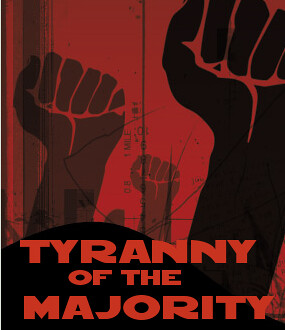Tyranny of the Majority Threatens Protection of Educational Opportunity in Ohio
There is one old joke told and retold about school finance lawsuits. I’ve heard it for twenty-five years as keynote speakers begin their remarks. It isn’t very funny, but I suppose it would be hard to make a really funny joke about the constitutional protection of public education. Yesterday afternoon as I sat in a meeting of the Education Committee of the Ohio Constitutional Modernization Commission, I wondered if a lot of the people in the room were drifting away—pretty much along the lines of the old joke: “School finance is like a Russian novel. It’s long, and it’s boring, and in the end everybody gets killed.”
A lot of the people observing the hearing were more likely worrying about the grand larceny—as schools designated “dropout recovery” cyber-charter schools suck money from the K-12 state education budget even as the dismal graduation rates of many of these schools are themselves driving up Ohio’s overall dropout rate. And many of the other observers were likely more worried about the impact of high-stakes testing in their classrooms or the layoff of teachers as funds are cut and even more funds follow children to charters. Lots of others were probably wondering whether this discussion might somehow affect whether they can pass a local school levy on the November ballot. School finance itself seems too long and too boring. We know that even after more than a decade of the DeRolph school funding litigation, which included four supreme court decisions that found Ohio school funding unconstitutional, our supreme court released jurisdiction in the case and never required the legislature to design a remedy. Nobody really looks forward to starting that all over again.
But that’s what this hearing was all about: the right of citizens to bring a lawsuit to challenge the way we fund our schools in Ohio. The Ohio General Assembly has established the Constitutional Modernization Commission to update a 163-year-old document for the twenty-first century. According to the Commission’s website, Ohio’s constitution has not been updated since 1970. The Commission is made up of legislators and public members appointed by the General Assembly.
At yesterday’s meeting of the Education Committee of the Commission, we were treated to two-hours of expert testimony—a theoretical presentation on the history and meaning of Article VI, Section 2 of our state constitution—from Charles Wilson, a professor emeritus of constitutional law at the Ohio State University. As Professor Wilson shaped what I soon Tyranny of the Majority Threatens Protection of Educational Opportunity in Ohio | janresseger:

